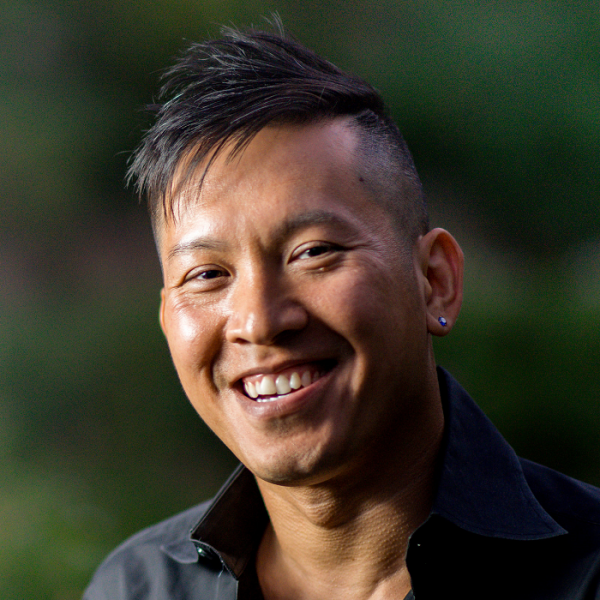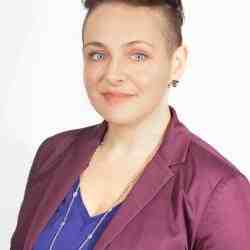Introduction
Lam Ho is changing the field of legal aid to make it more accessible and responsive to underserved communities and to strengthen its role as a vehicle for social justice.
The New Idea
Lam Ho founded the Community Activism Law Alliance (CALA) in an effort to reform legal aid and re-imagine how lawyers and communities work together in service of social justice and social change. Community lawyering is facing both a crisis of funding and a crisis of impact, due in part to structural limitations and a more transactional-based approach that has come to define the field over the last 3+ decades. In contrast, beginning in Chicago CALA has designed a methodology that embeds lawyers within community organizations of all kinds in a true partnership that supports community-led activism but with the legal expertise often required to make substantial progress on everything from immigration to domestic violence to housing discrimination. The CALA model is cost efficient because it uses free, existing neighborhood spaces and because partner organizations provide staffing, language and administrative support. And it is more responsive and relevant to community needs because partners (not lawyers) decide the hours, areas of law, priority issues, eligibility criteria, and types of services. CALA is better able to reach a wide range of underserved populations – including groups like undocumented immigrants and sex workers that are deliberately excluded from federally funded legal services – and also trains citizens activists in the law so that they are better equipped beyond the conclusion of individual cases to leverage the law in service of social change. In the end, Lam envisions a new legal aid system that pivots from “serving” clients to enabling marginalized communities to achieve lasting social, economic, and political justice.
Lam founded CALA in 2015 and today operates 18 community-located, community-operated, and community-directed programs across the Chicago area. Now with several years of demonstration under its belt, CALA seeks to expose more and more lawyers and legal aid organizations to the advantages of its model and become the leading national organization that will reshape standard practices in legal aid. Meanwhile CALA has begun working with local law schools so that incoming generations of lawyers will gain exposure to this new framework of lawyering and represent a new talent pipeline of lawyers that understands both the power of law as well as its limitations when in isolation.
The Problem
Our legal system—even the legal aid programs tasked with providing access to it—is a system of gaps. Today, justice is unavailable to millions fighting for basic and important human needs, including the right to remain in the country, receive fair wages, avoid homelessness, and safety from violence. Indeed, the World Justice Project found more than 4 out of 5 low-income litigants in the United States cannot access lawyers.
Despite this crisis, funding for legal aid dropped by approximately 60% in the last decade, as the number of people living in poverty increased. In 2014, Americans spent more on Halloween costumes for their pets than federal funding for legal aid. And that funding is restrictive, as millions are prohibited from services. Legal aid organizations are restricted in what they can do: type of services and cases, strategies used, and goals they can pursue. Any organization receiving federal funding are entirely restricted from working with/on over 20 groups and types of cases—including most undocumented immigrants, sex workers, class actions, school desegregation, prisoner rights, and abortions. Given funding cuts, reactionary centralization of programs—away from the neighborhoods where clients live, restrictions leaving out millions, and the adverse impact on access to justice; legal aid cannot continue to operate in the same way.
Unfortunately, access gaps are not the only problem; the US legal system has become increasingly closed, disconnected from the socio-political movements that should collaborate with and define the mission of progressive lawyers. Lawyers too often work in isolation, separate from mass struggles such as the immigrant rights or racial justice movements that affect disadvantaged communities—and in which their clients are often involved. As a result of restrictive funding and the disconnection from other social-change forces, lawyers mostly provide temporary relief for single clients without achieving meaningful systemic change. As courts becomes increasingly unwilling to expand—or even maintain—legal protections for women, workers, people of color, lgbtq people, and other groups; lawyers cannot achieve real systemic change working alone, without activists and impacted communities.
The effects on community organizations are significant: legal aid is failing them at a time when the need for it is more urgent than ever. The community and activist organizations working on the front lines of a range of important social justice issues, from immigrant deportation to reproductive rights, are increasingly burdened, with many of the country’s legal winds shifting against them, and yet their access to the law and lawyers is both limited and often far from strategic.
The Strategy
Collaboration is at the core of CALA and its vision to change legal aid. The premise is straightforward: lawyers need to be embedded with the activists, organizers and changemakers pushing for structural-level reform in society because this will advance the cause of social justice more quickly and effectively. CALA’s strategy is to design and test a new model of community lawyering based on the principles of community-location, community-operation and community-direction, and then spread the model widely until it becomes the new normal.
At a fundamental level, the CALA model is a shift from a transactional relationship that tends to be more reactive and focused on individual crises to a transformative partnership model that is proactive and pushes for systems change. Plus by uniting lawyers with activists, CALA leverages the combined resources of each to operate more cost-effectively while achieving greater impact than what lawyers or activists working alone could achieve. The model has numerous advantages:
1. Much greater community ownership and direction. CALA’s vision is to change this traditional legal aid by redistributing the power of the legal process to communities for which justice is often out of reach. Everything it does is in partnership with community organizations and activists. And most importantly, its partners set the priorities. Indeed, when CALA approaches a partner, it simply asks them to tell us how it can best serve its team and its goals. Decisions regarding the operations, scope, and even legal strategy are made by community organizations. Indeed, CALA “custom-builds” legal programs for communities. This shift has a number of practical implications too, for example: most CALA lawyers work from 4-10pm because this is when community members are most available and can take full advantage of their presence.
2. Greater access for underserved populations: CALA’s model provides access to populations that are currently underserved, due to geography, personal status, or circumstances. The programs are physically located in their communities to ensure geographic accessibility – a major shift from the status quo which has the vast majority of legal service organizations headquartered in downtowns. Community partners provide a direct conduit for clients, and the programs are operated jointly with and staffed by community members to facilitate integration into the communities they serve. Nongovernmental funding ensures that there are no restrictions on whom CALA can serve.
3. Strengthened capacity for grassroots community organizations: The community activism-law programs strengthen the capacity of grassroots community partners to pursue their goals by offering them general legal support for their work. This is a significant shift from the hyper-specialized direction the law has been moving, much like the medical profession. CALA assists with such tasks as co-authoring reports on community issues, creating know-your-rights materials, legal research and more. As with individual cases, CALA’s work for organizations are guided by their needs and instructions, and so requires a broad understanding of many areas of the law. Because of the embedded relationships, grassroots organizations learn a great deal about legal strategies that extend beyond the CALA partnership and become part of their toolbox for social change.
4. Sustained investment and participation by community members: One of the challenges of community lawyering generally is the consistent support of and integration into the communities served. CALA’s community activism model addresses this issue by fully integrating the goals and operations of its clinic with those of its partner organizations. This also has the benefit of significant cost reduction: CALA’s partners offer in-kind support, including free office space and equipment, as well as administrative, language, and clerical support. This support allows CALA to operate at significantly less cost than other legal service providers: all it has to do is support lawyer salaries. It also leverages community volunteers of all kinds to further its work.
5. Reclaiming the law as a tool for social justice: Lam sees this moment as an opportunity to reposition the law as a servant to the public good, returning in a sense to its original role (“advocates”), and appealing to a new generation of lawyers hungry to contribute in meaningful ways to systemic, structural changes in society. Interestingly, the paradox in the CALA model is that gaining power requires first ceding power and authority to the communities lawyers serve.
All of this represents a significant shift from the status quo, at multiple levels: A mindset shift in terms of the power dynamics and from the lawyer-as-expert to the lawyer-as-servant; a shift in the structure of the relationship between lawyers and the communities and individuals they work on behalf of; a shift in the funding model; and ultimately a shift in the kinds of training and experience young lawyers will need to be successful.
These shifts are felt in the daily, weekly, monthly practice of CALA lawyers. The standard operating procedure for traditional legal aid, on the issue of housing discrimination or evictions for example, would mean an individual in West Chicago who was unfairly evicted would be directed to the downtown legal aid organization to meet with a housing lawyer to consider taking the case. This process can take months depending on case load, and assumes the individual is even available or has the resources to make multiple trips downtown for support. Best case scenario, the individual case is won. But nothing about the tenant-owner relationship has changed. With CALA, not only are the lawyers within the communities themselves, working in partnership with trusted organizations, but the goals are much broader: not winning one case at a time, but rather supporting tenant unionization, for example, or a permanent shift in tenant rights that would reduce the allowed parameters for eviction in the first place. With CALA, lawyers share the commitment to systems change and work toward that end.
Over the next 3-5 years Lam and his team seek to expose more and more lawyers and legal aid organizations to the advantages of the CALA model and ultimately change how legal aid and progressive organizations operate on a national level. Already the ground is shifting: whereas 18 months ago, Lam was actively seeking out community organization parnters, now they are coming to CALA and the demand for lawyers is outpacing supply. The Legal Aid Foundation – one of the largest legal aid organizations in the country – is re-examining how it trains its incoming lawyers to make sure they have sufficient general knowledge of many areas of the law. And law schools are asking CALA to embed students interested in community lawyering into its local Chicago projects.
Over the next five to ten years, CALA hopes to become the leading national organization on community and progressive lawyering that will reshape standard practices in legal aid. On the one hand, this means further refining the model and demonstrating its success on a national level, including by rigorous evaluation and cost benefit analysis of what’s working and why it’s better than the alternative from the standpoint of social impact. Initially, Lam plans to continuing expanding—and improving—the model to new communities in the Midwest. This includes outreach, education and training, and of course evaluation. CALA will test the most efficient ways for other lawyers and organizations to integrate both components of the model and/or implement the entire model. CALA is also in the early stages of developing curriculum for law schools to teach and develop future generations of lawyers to be community activist lawyers, and hopes to leverage the influence of law schools and other legal organizations to advance this new community activism lawyering model.
CALA’s current budget, from July 2017 to June 2018, is $850,000 up from $600,000 last year. The projected budget for next year is $1,100,000 with a team of 15.
The Person
At the core of who Lam is as an attorney are haunting images of the brutality and injustice that members of his community can face. A mother sobbing hysterically as her son described watching the police beating his brother. A phone call from a 17-year-old orphan considering an abortion, even as she is being kicked out of her second foster home in a matter of months. These images reflect both the tininess of what one lawyer can achieve in the face of, and the struggle to maximize what he can do against, this onslaught. But there are also visions of an undocumented victim of domestic violence speaking to almost a hundred people about her survival, urging them to join her fight. Or standing side by side with grassroots activists who helped him stop a deportation already under way—using grassroots tactics to convince ICE to land a plane in Texas and return a father to his family. And being part of a demonstration and vigil as current and former sex workers “come out of the shadows” and declare that sex worker rights are human and worker rights. These images inspire and energize Lam; they are even deeper in the core of who he is as an attorney: both recognition of the strength, resilience, and creativity of “clients” in the face of, and their capacity to create social change against, this onslaught.
More personally, his commitment to working with disadvantaged populations stems from his own background as an immigrant, whose family ate at soup kitchens, received welfare, and was marred by severe domestic violence: and his ability to overcome it. These experiences provide not only a direct understanding of the systemic challenges and inequities in our society, but they also endow him with a deeply-rooted sense of responsibility and gratitude. He has worked with low-income communities through non-profits, as an activist, and by organizing for almost 25 years. He has been an activist for same-sex partnership, against racial profiling, and inadequate HIV funding; an organizer for gay/queer men’s health and stopping homophobia; a direct services provider at an AIDS hospice, for children with disabilities, as a volunteer at homeless shelters and soup kitchens. He went to law school determined to combine my experiences working with communities with a legal career and focused his law education—academic, clinical, and extracurricular—on bridging the gap between the law and social change.




